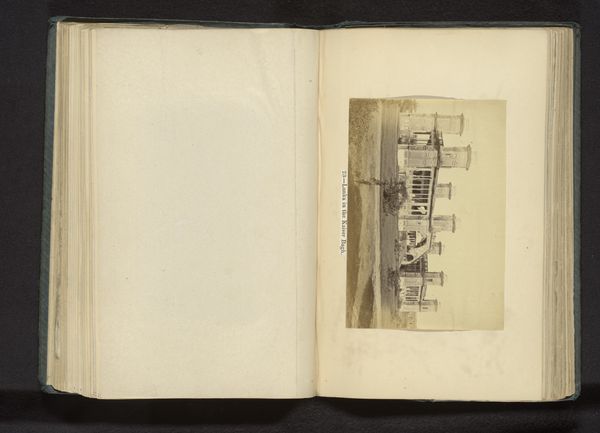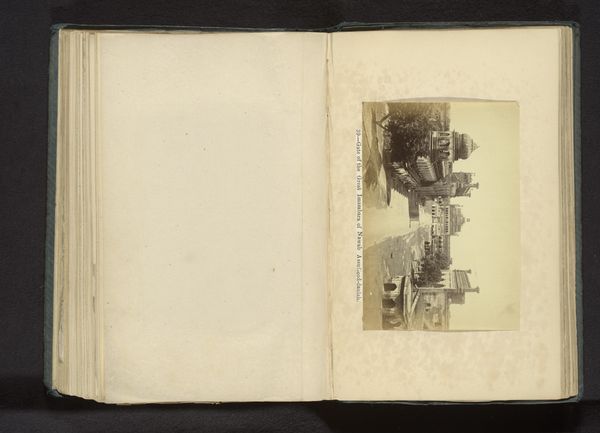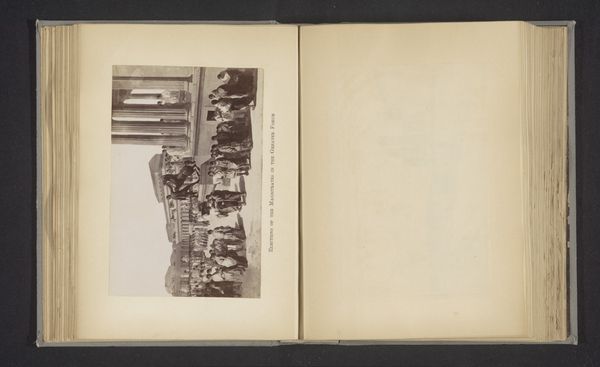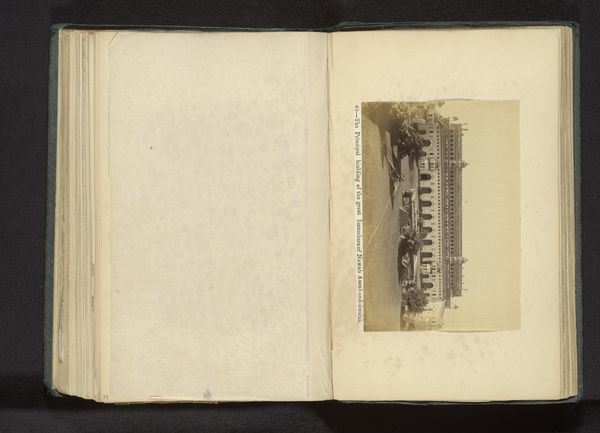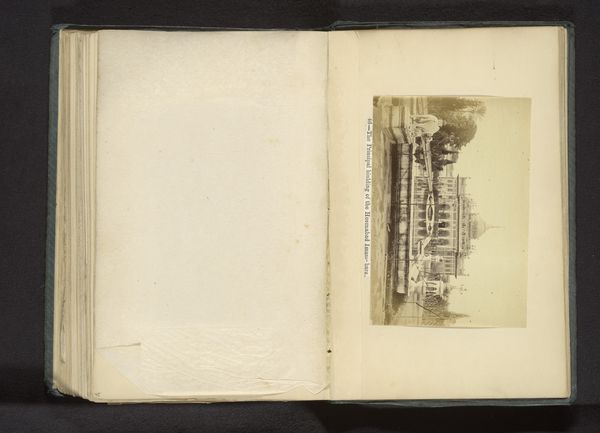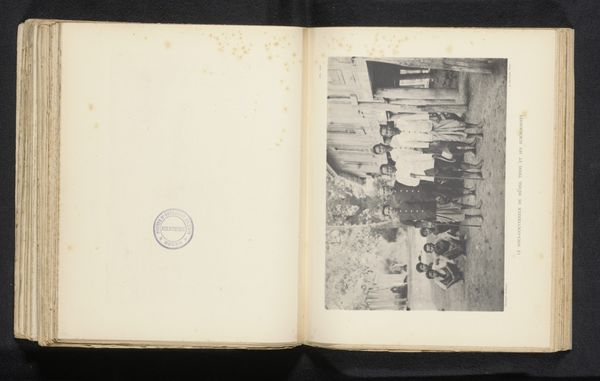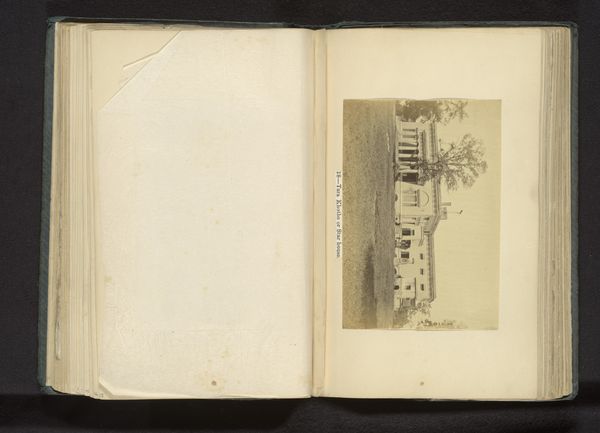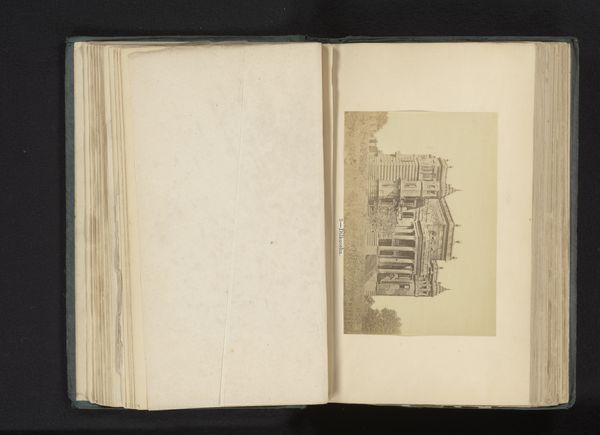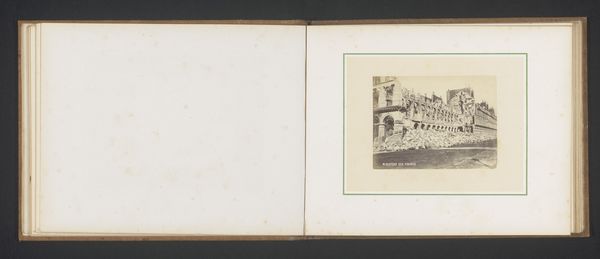
photography, site-specific, albumen-print
#
landscape
#
photography
#
orientalism
#
site-specific
#
albumen-print
Dimensions: height 106 mm, width 154 mm
Copyright: Rijks Museum: Open Domain
Curator: Before us, we have an albumen print from the hand of Darogha Ubbas Alli, capturing a landscape vista in a work titled "Gezicht op de Sint-Jozefkerk in Lucknow," dating to before 1874. The photographic print appears to be bound into an album. Editor: It has a stark and formal beauty. The way the church fills the frame suggests an intention beyond mere documentation. There is a very calculated presentation of religious might. Curator: Indeed. It’s a beautiful demonstration of the materials meeting both the demands for colonial surveys and aesthetic sensibilities influenced by the context of Lucknow and its relationship with external powers. Look closely at the precise tonal control achieved through the albumen process; such technical prowess mirrors a complex layering of socio-political motives behind the commissioning and creation of these kinds of photographs. Editor: Precisely, and notice how the architecture itself becomes symbolic in this photographic tableau. The symmetry, the upward striving lines—all typical signifiers of religious faith are here rendered anew within a colonial landscape. One might read this as an attempt to visually anchor faith and order in a new land. Curator: Consider, too, how the labor and costs associated with site-specific photography at the time contribute to the value judgements. The act of transporting equipment, preparing chemicals, setting up the shot—all signal a degree of resource allocation and purpose. What do we take away, then, from understanding these components? Editor: Perhaps that the church serves as an emblem—one that goes beyond simple representation. It symbolizes cultural exchange, power dynamics, religious outreach. All are reflected in its imposing structure and in its careful portrayal through Alli’s lens. The context of Orientalism also plays heavily, doesn't it? How it allows western viewers to build connections between spirituality and physical form. Curator: Exactly. Considering the materials and modes of production encourages us to scrutinize these symbolic readings by accounting for labor and resource allocation that created the conditions of its consumption. Editor: This careful, almost reverential portrayal definitely moves beyond mere topographical recording to become something richer. It encapsulates the cultural spirit of its era. Curator: A valuable glimpse, not only of a structure, but of the multilayered histories ingrained within the processes and materials of its representation. Editor: Yes, and through its visual language, it beckons us to interpret stories layered with significance—architectural and more.
Comments
No comments
Be the first to comment and join the conversation on the ultimate creative platform.
